THE RIGHT THICKNESS OF PPF
Post By || 2024-04-20
The optimal thickness of paint protection film (PPF) for vehicles varies based on the intended use, durability, and desired aesthetic, but generally, it falls within a specific range to ensure effective protection without compromising the vehicle’s appearance.
.jpeg)
The optimal thickness of paint protection film (PPF) for vehicles varies based on the intended use, durability, and desired aesthetic,
but generally, it falls within a specific range to ensure effective protection without compromising the vehicle’s appearance. Here's a detailed description of how to determine
the right thickness of paint protection film:
Standard Thickness Range
Most paint protection films on the market range from 6 to 10 mils (millimeters) thick.
This thickness is designed to offer substantial protection against common hazards such as rock chips, road debris, scratches, and minor impacts.
Factors to Consider
1. Protection Level: The primary consideration for the thickness of PPF is the level of protection you desire. Thicker films,
around 8 to 10 mils, provide better resistance to impact and scratching, making them ideal for high-wear areas such as front bumpers, hoods, and side mirrors. These areas are most susceptible to damage from road debris.
2. Flexibility and Conformability: Thicker films can sometimes be less flexible, which might make them more challenging to apply smoothly on complex curves and edges of the car.
However, advancements in PPF technology have improved the flexibility of thicker films, making them easier to work with.
3. Aesthetic Impact: While thicker films provide better protection, they must also maintain the aesthetic qualities of the car’s exterior.
A good PPF should be virtually invisible, with a high-gloss finish that enhances the paint’s color and brightness. It should not alter the appearance of the original paint or add any texture.
4. Durability and Longevity: Thicker films tend to be more durable and have a longer lifespan. They are more resistant to wear and tear, meaning they can protect the paint longer before needing replacement.
This can be a cost-effective option in the long run, despite a potentially higher initial cost.
Recommendations
General Use: For most consumer vehicles, a film that is 8 mils thick is often recommended. It offers a good balance between protection, ease of application, and cost.
High Impact Areas : For areas of the vehicle that are particularly vulnerable to damage, such as the front bumper or leading edge of the hood, choosing a thickness at the higher end of the spectrum (around 10 mils) can be beneficial.
Professional Installation: To ensure optimal performance and appearance, it is advisable to have PPF professionally installed. Professionals can accurately assess which thickness is best for your vehicle’s specific needs and ensure a flawless application.




.jpeg)